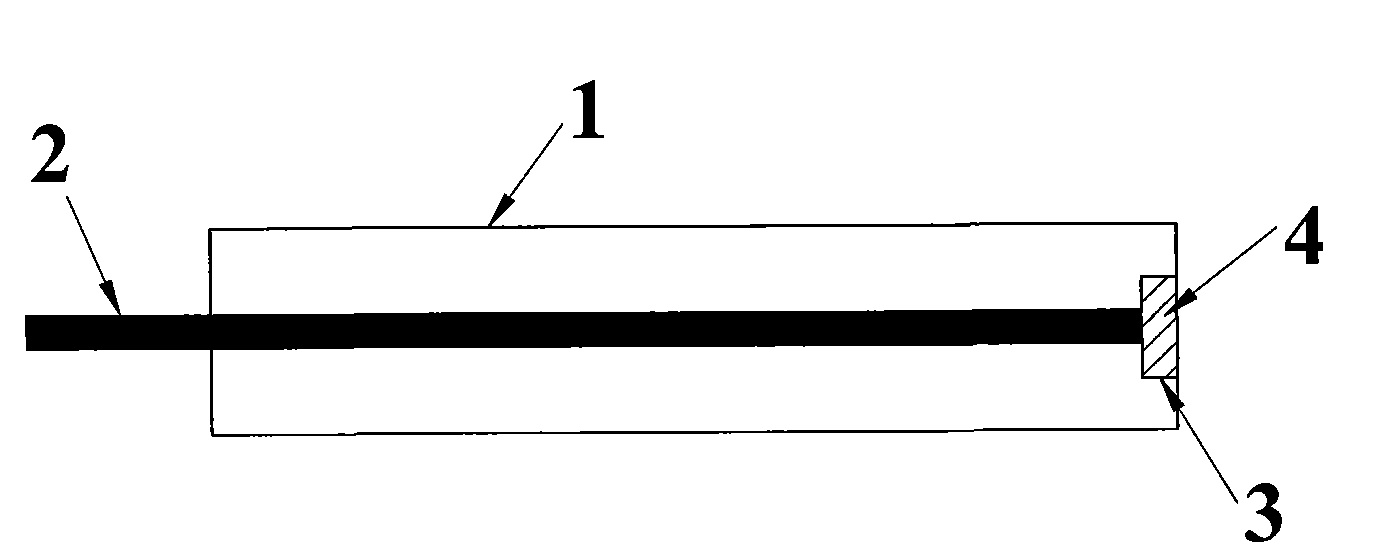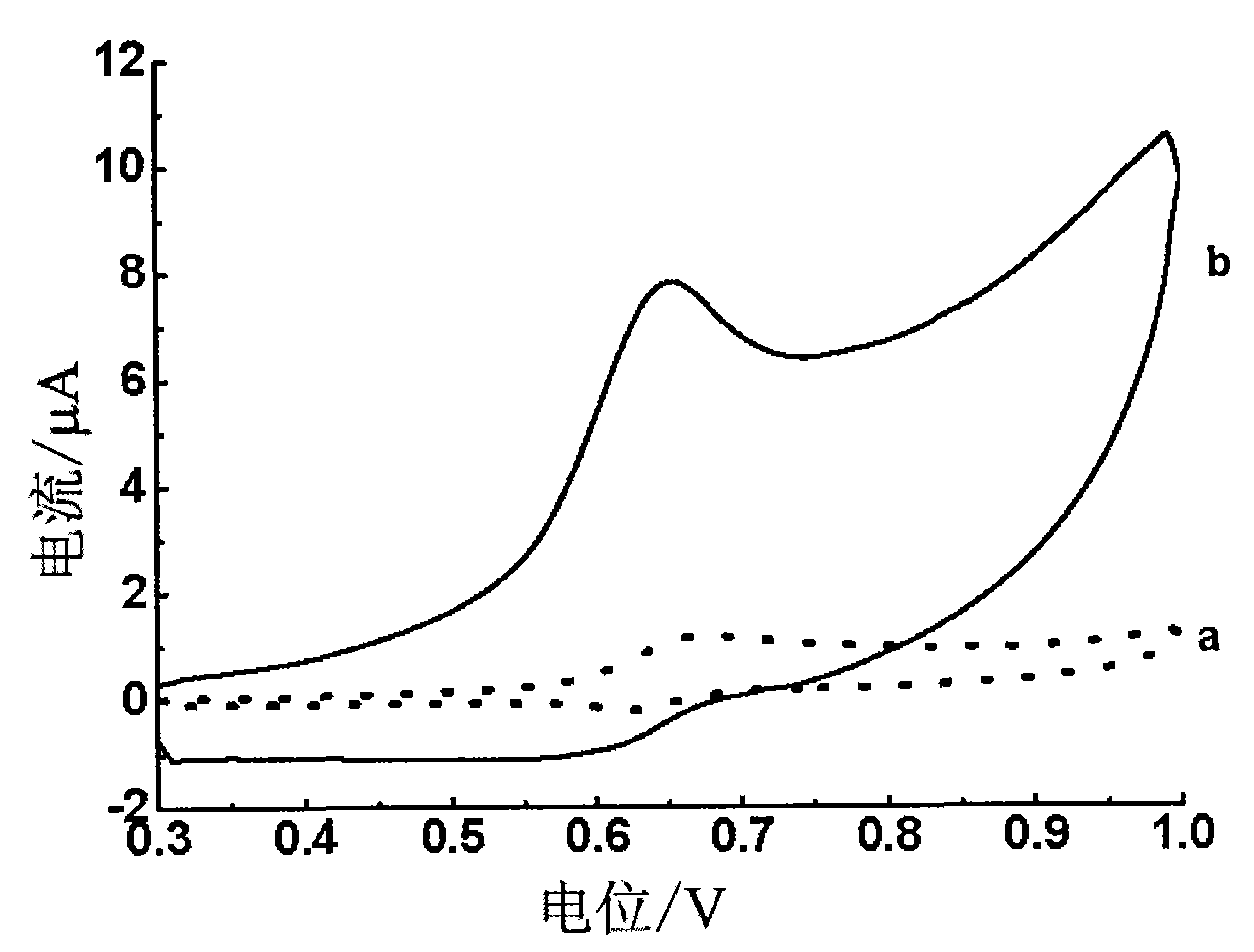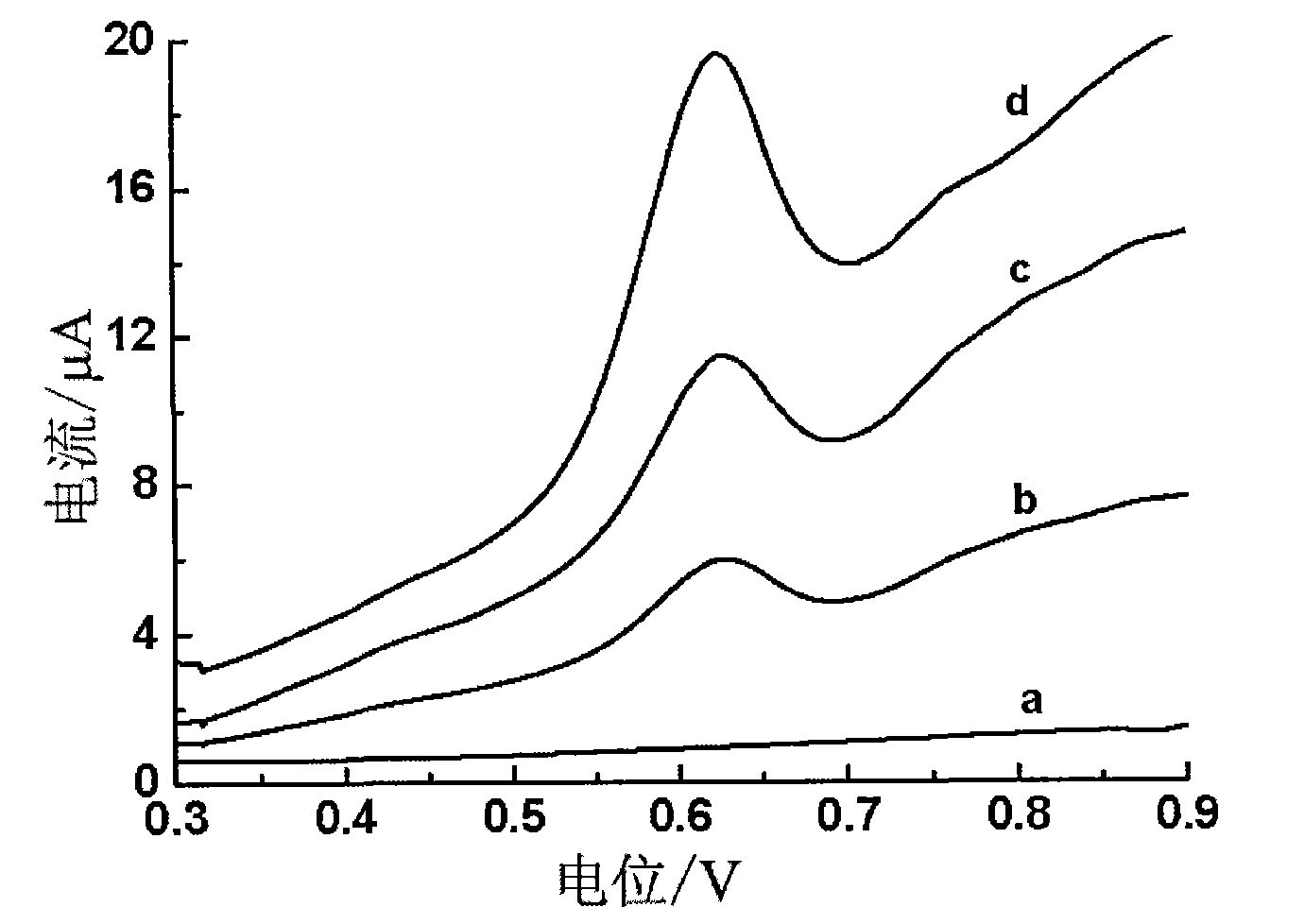Electrochemical sensor for quickly detecting Sudan I in foods and preparation method thereof
A Sudan red and electrochemical technology, applied in analytical chemistry and food safety fields, can solve the problems of long analysis time, great harm to human body, complicated operation, etc., and achieve the effect of wide source of raw materials, simple operation and simple preparation method
- Summary
- Abstract
- Description
- Claims
- Application Information
AI Technical Summary
Problems solved by technology
Method used
Image
Examples
Embodiment 1
[0027] Such as figure 1 As shown, the electrochemical sensor of the present invention is mainly composed of an insulating column 1, a metal conductor 2, a cavity 3 and a sensitive material 4. The diameter of the insulating column 1 is usually 3 to 15 mm, and polytetrafluoroethylene can be used as the insulating material. Polytrifluoroethylene or polyetheretherketone resin can also be used; the metal conductor 2 is penetrated and fixed in the center of the insulating column 1 , and one end thereof is located outside the rear end of the insulating column 1 . Metal conductors can be copper rods, aluminum rods or platinum rods, usually with a diameter of 0.25-3mm. A cavity 3 is provided at the front end of the insulating column 1. The cavity 3 is generally cylindrical, with a height of 0.5-3 mm and a diameter of 1-6 mm. Sensitive material 4 is a mixture of montmorillonite, conductive carbon powder and binder, and the mass percentages of montmorillonite and conductive carbon powde...
Embodiment 2
[0029] Mix the montmorillonite with a particle size of 100nm, graphite powder and paraffin oil with a particle size of 300nm, the mass percentages of montmorillonite and graphite powder in the resulting mixture are 15% and 73% respectively, and the rest are paraffin oil , to obtain the sensitive material, and then the sensitive material is filled in the cylindrical cavity with a diameter of 3 mm and a height of 1 mm at the front end of the polytetrafluoroethylene column described in Example 1. The polytetrafluoroethylene column is 5 cm long and 6 mm in diameter, and the center is inserted And a copper rod with a diameter of 1mm is fixed, so that the sensitive material is in contact with the end of the copper rod. Then grind and polish on the weighing paper to obtain an electrochemical sensor for fast detection of Sudan I in food.
Embodiment 3
[0031] Mix the montmorillonite with a particle size of 100nm, graphite powder and paraffin oil with a particle size of 300nm, the mass percentages of montmorillonite and graphite powder in the resulting mixture are 10% and 75% respectively, and the rest are paraffin oil , to obtain the sensitive material, and then the sensitive material is filled in the cylindrical cavity with a diameter of 3 mm and a height of 1 mm at the front end of the polytetrafluoroethylene column described in Example 1. The polytetrafluoroethylene column is 5 cm long and 6 mm in diameter, and the center is inserted And a copper rod with a diameter of 1mm is fixed, so that the sensitive material is in contact with the end of the copper rod. Then grind and polish on the weighing paper to obtain an electrochemical sensor for fast detection of Sudan I in food.
PUM
| Property | Measurement | Unit |
|---|---|---|
| particle diameter | aaaaa | aaaaa |
| height | aaaaa | aaaaa |
| diameter | aaaaa | aaaaa |
Abstract
Description
Claims
Application Information
 Login to View More
Login to View More - R&D
- Intellectual Property
- Life Sciences
- Materials
- Tech Scout
- Unparalleled Data Quality
- Higher Quality Content
- 60% Fewer Hallucinations
Browse by: Latest US Patents, China's latest patents, Technical Efficacy Thesaurus, Application Domain, Technology Topic, Popular Technical Reports.
© 2025 PatSnap. All rights reserved.Legal|Privacy policy|Modern Slavery Act Transparency Statement|Sitemap|About US| Contact US: help@patsnap.com



